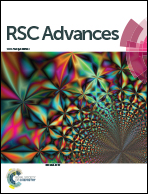Characterization of carotenoids and phenolics during fruit ripening of Chinese raspberry (Rubus chingii Hu)
Abstract
Chinese raspberry (Rubus chingii Hu) is a fruit valued for it's health benefits, which is indigenous to China. It is a great source of antioxidants. However, the fruit phytochemicals are poorly understood. Phenolics and carotenoids attract much attention for their antioxidant capability, and they dramatically change during fruit ripening, leading to the difference in color, flavor and medicinal components. In this study, we investigated the change of carotenoids, phenolics and antioxidant activity using spectrophotometry during four different ripening phases i.e. mature green (MG), green yellow (GY), yellow orange (YO) and red (RE). The major components of carotenoids, anthocyanins, ellagitannins and flavonols were identified and quantified by LC-MS/MS. As a result, five carotenoids (mainly β-Citraurin and its esters), six anthocyanins (mainly anthocyanins covalently linked to another flavonoid unit), methyl (S)-flavogallonate and rourinoside were first identified in Rubus. In contrast to other known raspberries, R. chingii had a continuous decrease in total phenolics during fruit ripening, which was due to a continuous decrease in flavonoids (including anthocyanin). Total anthocyanin and flavonoid respectively declined from 19.5 to 6.9 mg/100 g FW, and 646.2 to 128.5 mg/100 g FW during fruit maturation and coloration. Accordingly, the components of anthocyanins, ellagitannins and flavonols also declined, thus resulting in a decrease in antioxidant activity (from 41.2 to 10.1 TEAC/100 g FW in ABTS and from 35.3 to 7.7 mmol TEAC/100 g FW in FRAP). In contrast, total carotenoid increased from 184.2 to 305.4 mg/100 g FW. Accordingly, the components of carotenoids also increased, with the exception of lutein. Additionally, kaempferol and quercetin were the main flavonoid aglycones, which were linked to a variety of glycosides. These kaempferol- and quercetin-glycosides mainly accumulated in epidermal hair and placentae. Notably, carotenoids (i.e. β-citraurin esters), instead of anthocyanins, gradually accumulated during fruit ripening, imparting the reddish color to ripe fruit.



 Please wait while we load your content...
Please wait while we load your content...